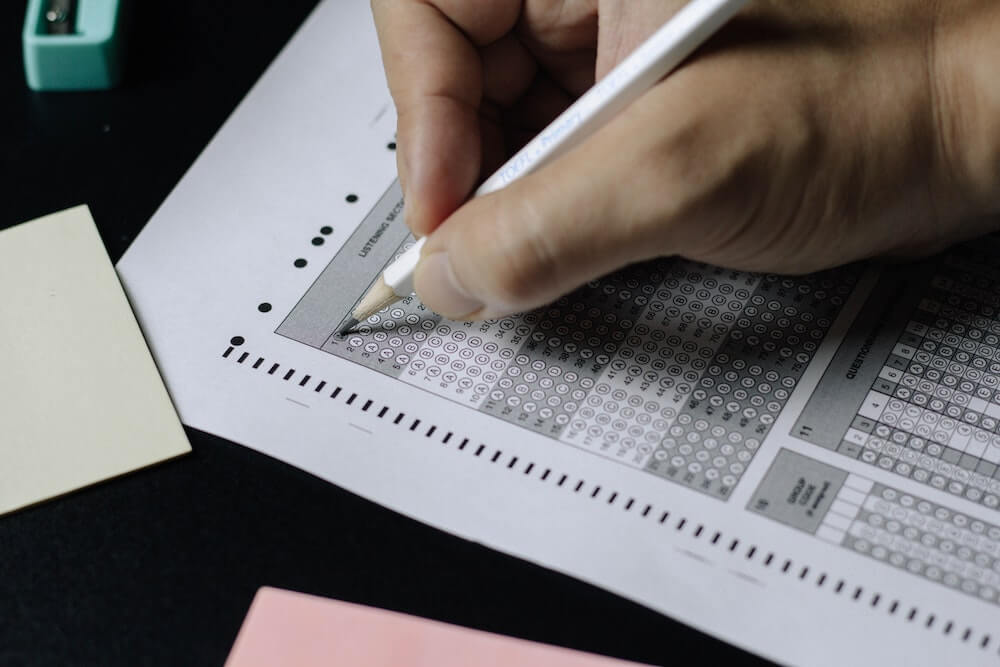Nobody wants hours of studying to go down the drain. School—exams in particular—can take a toll on any student. Unless you can take tests effectively and efficiently, how much or how little you study won’t make a big difference. That’s why we compiled some of the top proven exam and test taking strategies out there.
Are you ready to ace your next exam and every test from now to eternity? Wow, let’s not get ahead of ourselves. We can’t make any guarantees, but these test taking strategies should increase your chances, your marks, and ultimately, your happiness.
1. Skim and Scan

Like how you do most assigned readings, skim and scan the entire thing first. While you are tackling the first few questions, your mind will subconsciously think about the rest of the test. At the very least, you won’t be surprised to find out that the last page is double-sided with only five minutes remaining. Good luck writing an essay in 300 seconds. For multiple-choice, you should skim the questions first before scanning the answers.
2. Predict the Future (Well, Kinda)

Try to anticipate the correct answer before looking at the options. Even though your anticipated answer may be correct, there may be an even better answer, but you at least have a strong starting point.
3. Pace Yourself

After skimming and scanning, take a few seconds to determine the pace you should be going. Adjust if necessary. The right pacing could be the difference between finishing your test with time left over to review or frantically rushing the last two pages. Never good.
4. Following the Instructions is a Good Start

Simple, right? Yet so many students don’t do this. Tiny details matter so pay close attention. If the question specifically asks for a country, do not write the name of a city. And no, Narnia doesn’t count.
5. Easier to Harder

Answering easier questions first builds confidence and momentum. Do what you know before you tackle the more difficult problems. Sometimes the answer to one question is embedded in another section of the test. Be on the lookout for any clues or hints, kinda like with Canada’s Luckiest Student’s Daily Challenges.
6. Think, But Don’t Over Think

Save the over-thinking for your romantic relationships. On second thought, don’t. Contrary to popular belief, your professors aren’t trying to trick you. No teacher wants his or her students to fail. Use your background knowledge and everything you have learned in class to formulate an appropriate answer. Do not over-analyze each word on the paper.
7. Skip Only if Absolutely Necessary

Skipping too many questions wastes precious time you don’t really have. Every now and then, it’s okay to move on if you’re stuck. Just as long as you remember to come back to them. Like skipping class, you don’t want to skip too many questions. Simply put a small asterisk beside a question you skip so you know where it is when you come back to it.
8. Be Neat

Ensure that your handwriting is legible. You can be the brightest student in the class but your teacher won’t know that unless they can read what you’ve written is a B or a squished together 13.
9. Eliminate, Cross Out, and Destroy

No, this is not a video game. This is real life. But strike out answers that you know are wrong. This will help you focus on the possible correct answers.
10. Make an Educated Guess

If you ever find yourself in a situation where you don’t know the answer, guess. Here are some tips to keep in mind:
- Eliminate choices with absolute qualifiers such as “always” or “never.”
- A positive statement is usually more correct than a negative one.
- If your answer is a numerical value, pick the number in the middle. For example, if asked when World War I began and you are given the following choices: 1823, 1914, 1939, and 1997, pick either 1914 or 1939.
One final reminder: dress comfortably. You don’t want to be sweating bullets or suffering from hypothermia while writing a test worth half your grade.

Help for all things student
*Opinions expressed are those of the author, and not necessarily those of Student Life Network or their partners.




